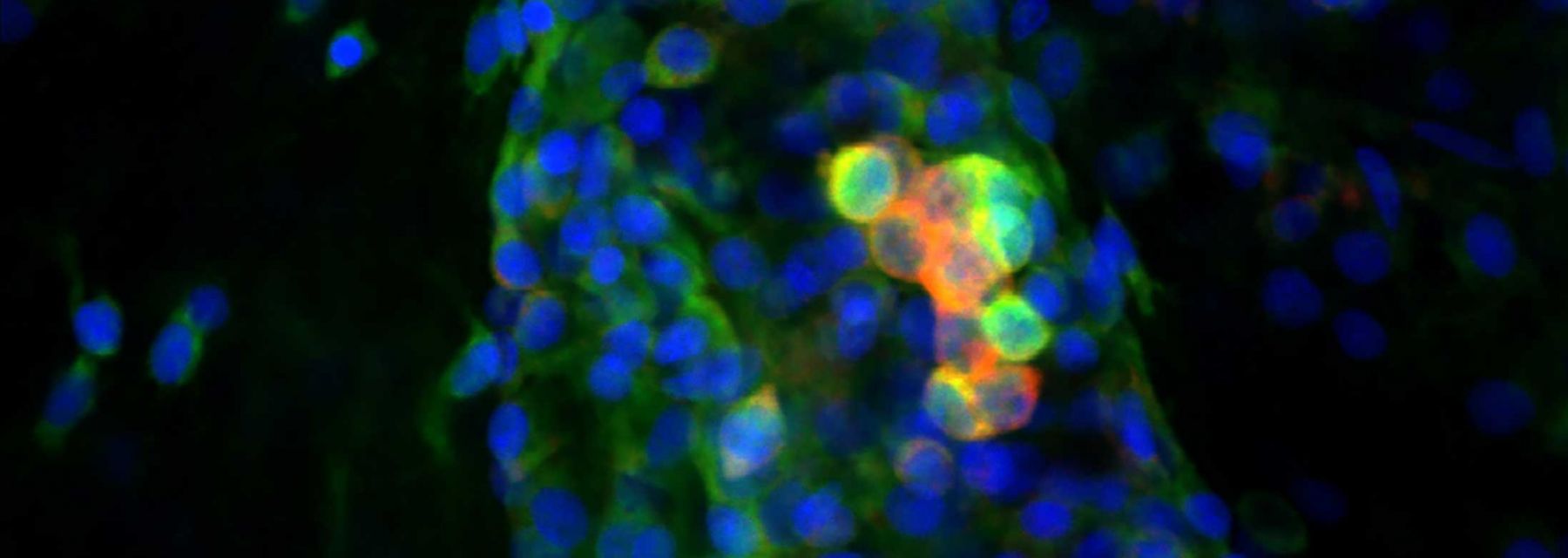Germline Stem Cells & Gamete Development
Every week, a Botryllus colony is in the process of regenerating all somatic and germline tissues, thus developmental processes, such formation and seeding of a germline niche, also occur weekly. During studies on allorecognition it was found that germline progenitors were mobile, and could transfer between individuals following vascular parabiosis. Importantly, once resettled in another individual, germline progenitors would compete for niche occupancy. This would often result in a situation where only one of the genotypes is represented in the gametic output of the fused individuals, a situation that will remain constant for life. This phenomenon, called stem cell parasitism (SCP) is a repeatable and heritable trait, and we have identified winner and loser genotypes among both laboratory-reared and natural populations, and maintain different genotypes in our mariculture facility. We are focused on understanding the molecular basis of these competitive abilities and are using a combination of prospective isolation, forward genetics and in vitro assays to dissect this process. Germline progenitors can be purified to homogeneity and experimentally transplanted, allowing us to quantify reconstitution and even visualize competition in vivo, and globally compare gene and protein expression. We have also found that the molecular basis of competition likely resides in homing abilities, which has been tested both in vivo and in vitro. Finally, we are taking a forward genetic approach to identify the genes in an unbiased manner.
Another powerful biological feature of Botryllus studies on germline development is that fertility is plastic. Following metamorphosis, individuals undergo take between 6-12 weeks to reach sexual maturity. Once they have achieved sexual maturity, individuals in both natural populations and the lab will cycle between being infertile, male or hermaphroditic. Because Botryllus is colonial we can isolate subclones of a single genotype in any of these states, allowing us to globally characterize gene expression and dissect the mechanisms which drive germ cell differentiation into both male and female gametes. We have found that, regardless of fertility, germline progenitors cycle between the primary and secondary bud germline niche, migrating in a cluster that includes somatic niche cells. In the figure, the left panel shows germline progenitors (detected by expression of the germline marker vasa) moving between the primary (bottom) and newly formed niche in the secondary bud (top). The middle panel shows a cluster of germline (red) and somatic niche (green) cells detected migrating through the vasculature. The right panel shows mature gonads in a hermaphrodite (the mature testis is green). The niche cells remain associated with the germline progenitors as they differentiate into mature gonads, and surround both testes and eggs. These cells express either male or female specific markers, and may instruct differentiation of germline progenitors, although how this occurs is unknown . The weekly seeding of a germline niche by stem cells with natural variation in competitive ability coupled to rapid gonad maturation provides an accessible and powerful model to dissect germline development in a basal chordate.
